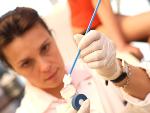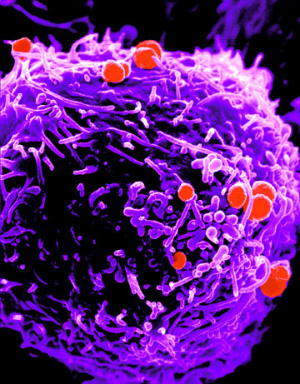What is smear on Papanicolau? The smear on Papanicolau is different from the usual smear on oncocytology? Who needs to do smear on Papanicolau? How is the smear on papanicolau? What do in the case of deviations in a smear by papanicolau? Read in this article.
Content

Special place among various types of female genital cancer occupies cervical cancer. His specificity is that it is often developing against the background of benign precancerous processes. Refusal of the birth of several children, early start of sexual life, sexually transmitted diseases, abortions, ecology, harmful habits are factors that contribute to the development of cervical diseases. Therefore, more and more often, experts talk about the epidemics of the cervical cancer, which covered the modern civilized world.
Modern diagnostic methods: Padnicolau smear and colposcopy — allow you to catch the initial precancerous changes and carry out simple and effective treatment at an early stage. That is why in developed countries, where every woman has the opportunity to pass such a survey every year, mortality from cervical cancer is steadily declining.
What is smear on Papanicolau?
Padnicolau smear is a simple effective test for identifying deviations from cervix cells. Designed in 1943., Initially, this test was intended to identify only cancer cells. Currently, deviations in cells on the pre-stage stage can be revealed using this test. Using the right plan of further action, many deviations can be successfully cured.
The smear on Papanicolau is different from the usual smear on oncocytology?
 Unlike oncocytological smears that are made in women's consultations, a specially selected composition of clamps and paints is used when carrying a smear of Papanicolau, allowing you to identify early precancerous cervical diseases with the greatest degree. This technique is standard for developed countries in Europe and America, since it gives the least amount of false negative results. When taking smears on the usual technique, the clamps are not used, and the set of dyes is extremely simplified.
Unlike oncocytological smears that are made in women's consultations, a specially selected composition of clamps and paints is used when carrying a smear of Papanicolau, allowing you to identify early precancerous cervical diseases with the greatest degree. This technique is standard for developed countries in Europe and America, since it gives the least amount of false negative results. When taking smears on the usual technique, the clamps are not used, and the set of dyes is extremely simplified.
In the center of immunology and reproductions, when taking smears, specially purchased in the US glass and dye sets. After research, all glasses are on eternal storage in the laboratory, which allows you to compare the smears at the same woman for a number of years.
Who needs to do smear on Papanicolau?
Papnicolau smear should do all women living or ever lived sex. It is recommended that the woman makes such a smear once a year. Papinicolau smear should not be done during menstruation or in the presence of an inflammatory process in the vagina. During the day before taking a smear, you should not live sexual life, use spermicidal creams, vaginal souls, dying or tampons, because all this can interfere with the correctness of the study.
How is the smear on papanicolau?
Papacolau smear is part of the usual gynecological inspection and is carried out quickly and painlessly. During the study, the doctor receives some cells from the cervix. For collecting cells, a small blade and a brush with a soft bristle is used, with which the smear is made on a glass plate. After that, the glass is sent to the laboratory, where specially prepared cytologists examine them under a microscope.
What are the results of smear by papanicolau?
Padnicolau smear is normal (negative) when all cells have normal sizes and shape. A smear with deviations (positive) happens when cells with deviations in the form and sizes are detected. To describe the degree of abnormality, special terminology is used: inflammatory process, intraepithelial damage low or high. Anomalous smear on Papanicola does not always mean that a woman has cancer.
What are the causes of abnormal fragments of Papanicola?
 In the presence of infection, such as thrush, trichomonas, chlamydia or gonococci, cervical cells have signs of inflammation and look abnormal. After the treatment of infections in Papanicolau smear usually returns to normal.
In the presence of infection, such as thrush, trichomonas, chlamydia or gonococci, cervical cells have signs of inflammation and look abnormal. After the treatment of infections in Papanicolau smear usually returns to normal.
Frequent cause of deviations in a papanicolau smear is Papillomavirus man. The virus may be present in the cervix, as well as to be the cause of pointed wings in the field of external genital organs. There are many types of human papillomavirus, some of which are associated with an increased risk of developing cervical cancer. Therefore, women who have a person's papilomavirus detected can be increased risk of cervical cancer.
Cancer cells are the most modified abnormal cells detected in Papanicola smear. With pre-cancer, only surface cells are amazed. Invasive cervical cancer means that the disease has been out of the surface layer of cells.
What do in the case of deviations in a smear by papanicolau?
The action plan depends on the degree of cell changes described by the cytologist. If the changes are associated with inflammation, the smear is usually repeated a few months later. If necessary, appropriate treatment can be assigned. Strokes in which low degree deviations can be repeated after a few months or the doctor may prescribe colposcopy. Deviations of a high degree is always an indication for colposcopy. Patients with deviations in the smear usually recommended the use of condoms and spermicidal gels or abstaining from sexual intercourse until the survey is completed.









